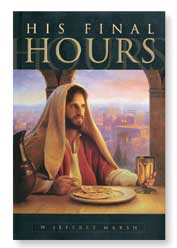By President Merrill J. Bateman
Recently, while preparing some remarks about BYU’s history, I gleaned some insights about the special nature of Brigham Young University.
The first lesson concerns the faith of the Saints who forged this institution. Though their economic base was fragile, they sacrificed every temporal asset to keep the school alive. It was not uncommon for Karl G. Maeser and his staff to receive less than one-half pay during the 1880s. Abraham O. Smoot, a successful businessman, stake president, mayor of Provo, and chairman of the board of Brigham Young Academy, mortgaged his home and gave his property to save the institution. He died penniless, having given everything to the school.
The faith of BYU’s founders was never stronger than during times of crisis. When an 1884 fire destroyed the academy’s only building, Reed Smoot, a student, cried, “Oh, Brother Maeser, the Academy is burned!” Maeser responded, “No such thing, it’s only the building.”1
A second observation from BYU’s history is the strong link between the university and the heavens. At each crisis the heavens were opened and instructions given. In the mid-1880s when it seemed that the school would close, Brigham Young appeared to President John Taylor and told him that “Christ himself was directing, and had a care over [the] school.”2
On another occasion Karl G. Maeser was shown the university of our day. This dream, given to at least two others during BYU’s history, assured the continuance of the university by showing the campus “filled with buildings–great temples of learning” and thousands of students. When Maeser received the dream, the school had no building and only a few students.
The vision was also given to a student, Alfred Kelly. He was scheduled to speak at commencement and encourage the sale of the upper campus so BYU’s debts could be paid. Troubled by the assignment, one morning he walked to Temple Hill. From the crest of the hill, he watched as the valley was bathed in the advancing sunlight, which “suddenly assumed the appearance of people.” Thousands of young people approached Temple Hill. “The whole of the present campus was illumined beyond the power of description and Kelly saw buildings here, not homes but temples of learning, large buildings, beautiful buildings, buildings which covered the top of this hill.” At the commencement Kelly shared his experience so powerfully that Jesse Knight came forward and offered his resources to save the campus.3
The third time the vision was given, it came to professor Sidney B. Sperry during the Depression. He had just learned that New York bankers had told LDS Church President Heber J. Grant that a loan to the Church was conditional on the closing of BYU. Brother Sperry went home heartsick but was awakened in the middle of the night and saw a vision of the Brigham Young University of the future. He saw beautiful modern buildings extending along the entire east bench and saw great concourses of people coming to the University to receive guidance and instruction. In connection with the University he saw a temple and therefore knew . . . BYU was going to remain a Church institution.4
A final insight gleaned from history concerns sacrifice. Almost everyone associated with BYU has felt a commitment to its divine mission and has been willing to give whatever was needed to move the university forward. I am reminded of Carl F. Eyring, dean of arts and sciences in the late 1940s. Besides teaching his share of classes and serving as dean, he supervised the construction of the Eyring Science Center, spending evenings and Saturdays doing manual labor on the building. Ill with cancer during the last year of construction, he died soon after the building was dedicated.5 The marvelous building named after him has just been renovated. It was refurbished rather than razed because of its superior construction. Today it stands as a memorial to this man’s sacrifice for the university.
As I contemplate the commitment and sacrifice of those who have gone before, I wonder, “What does the Lord expect of us?” If Brigham Young University is to reach its destiny of becoming a world-class university, it will happen only if we continue the tradition of sacrifice. We must be frugal in the use of our resources, but not in our willingness to spend our time and energy to become the very best.
NOTES
1. Ernest L. Wilkinson and W. Cleon Skousen, Brigham Young University: A School of Destiny (Provo: BYU Press, 1976), pp. 74–75.
2. Leonard J. Arrington, ed., The Presidents of the Church (Salt Lake City: Deseret Book, 1986), p. 109.
3. B. F. Larsen, “Fifty Years Ago,” speech given at BYU Alumni meeting, May 25, 1962, B. F. Larsen biographical file, BYU Archives, pp. 4–5.
4. “Vision of Dr. Sidney B. Sperry,” memorandum by W. Cleon Skousen, Sept. 24, 1975, BYU Archives, p. 1.
5. Wilkinson and Skousen, School of Destiny, pp. 379 and 887.
This article is adapted from a devotional address given Sept. 7, 1999, in the Marriott Center.









